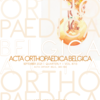Impact of the COVID-19 pandemic on the trauma and orthopaedic department at level one Major Trauma Centre in the republic of Ireland
COVID-19 ; pandemic ; trauma ; orthopaedics ; surgery ; Ireland
Published online: Nov 22 2021
Abstract
The Coronavirus Disease (COVID-19) has been identified as the cause of a rapidly spreading respira- tory illness in Wuhan, Hubei Province, China in early December 2019. Since then, the free movement of people has decreased. The trauma-related injuries and the demand on the trauma and orthopaedic service would be expected to fall. The aim of this study to examine the impact of the COVID-19 pandemic on a level 1 Trauma Centre in the Republic of Ireland (ROI). Patients admitted to the Trauma & Orthopaedic (T&O) Department at Cork University Hospital (CUH) and the South Infirmary Victoria University Hospital (SIVUH), and their associated fracture patterns and management, between 01/03/20 and the 15/04/20 were documented and compared to the patient admissions from the same time period one year earlier in 2019. The total number of T&O operations performed decreased by 10.15% (P= 0.03)between the two time periods. The number of paediatric procedures fell by 40.32% (P= 0.15). Adult Distal radius and paediatric elbow fractures (excluding supracondylar fracture) increased by 88% and 13% (P= 0.19), (P= 0.04) respectively. Hip fractures remained the most common fracture-type admitted for surgery. The COVID-19 crisis has to lead to a decrease in the total numbers of trauma surgeries in a major trauma centre in the ROI. This decline is most evident in the number of paediatric and male adult patients presenting with fractures requiring operative management. Interestingly, fractures directly related to solo outdoor activities, such as running or cycling, as well as simple mechanical falls like ankle, distal radius, elbow, and hand fractures all increased. Irish males were more compliant with outdoors restrictions than females.
